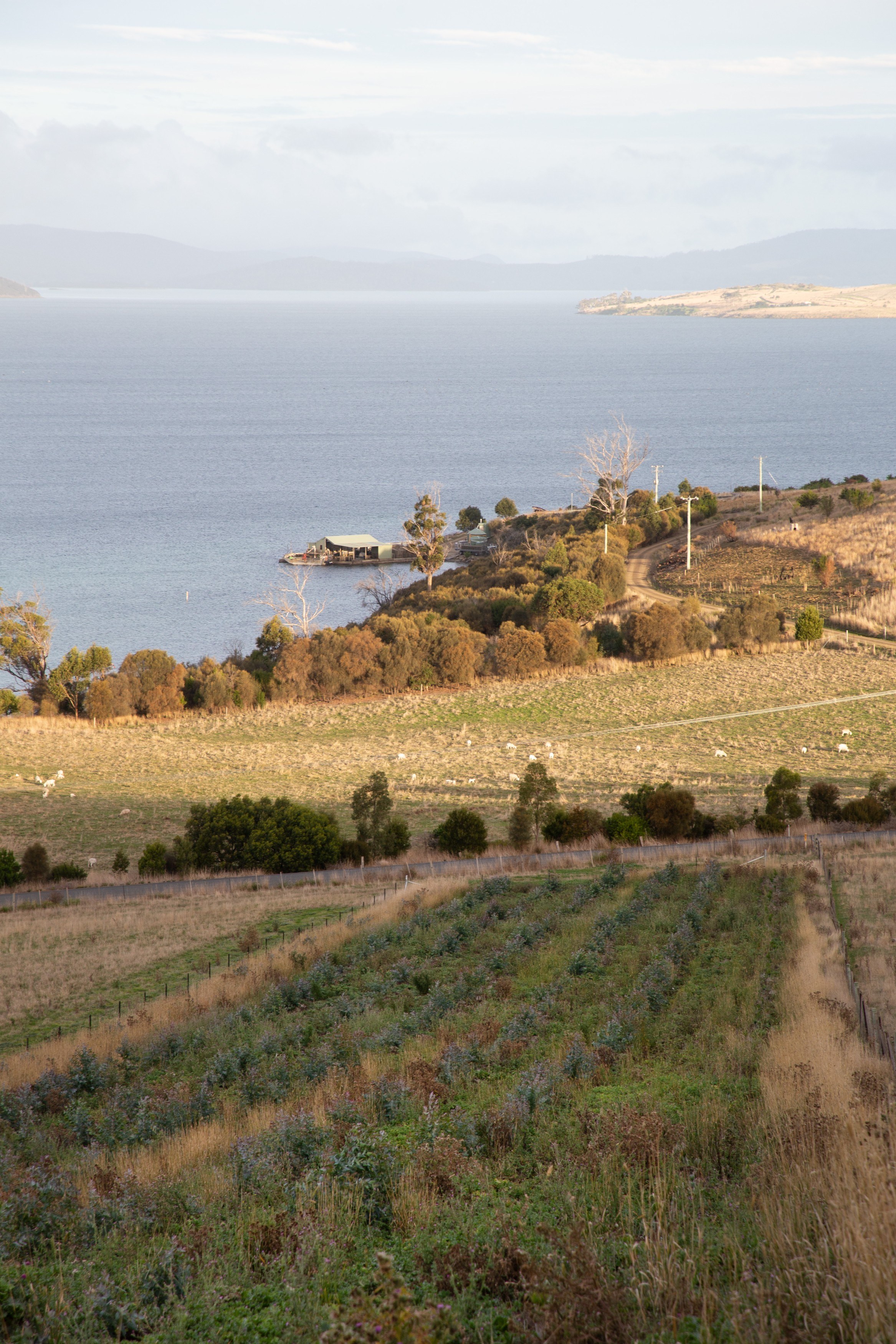Case Study - Agroforestry
7. Fulham: Using trees for shelter to create economic return
Fulham, Dunalley - Fulham is one of seven successful Integrated Farm Forestry Demonstration Sites receiving grant funding to develop landscape scale best practice forestry plantings establishing over 20.2ha of commercial shelterbelts along established fence lines.

At a glance
| Owner | Sandy and Penelope Gray |
| Property name | Fulham |
| Location | Dunalley, Southern Tasmania |
| Property size | 1,100ha |
| Enterprise | Merino sheep, cattle, olives, timber, seaweed and oysters |
| Rainfall | 538.7mm |
| Soil type | Clay loam |
| Forested area | 20ha |
Key points
- Trees deliver multiple benefits
- Wildlife corridor
- Sediment run off and limiting erosion
- Increased economic returns
- Shelter for sheep and cattle
- Staggered harvesting options to maintain shelter

About
Fulham has been owned and operated by the Gray family since 1926 and throughout that time the family has diversified their farming system include five enterprises.
There are 14 separate shelterbelt plantings consisting mainly of mixed shelterbelts. The P.radiata and E.globulus were planted to allow for staggered harvesting to occur, allowing the Gray’s to maintain their shelter benefits whilst gaining some economic returns.
The Grays have been planting mixed species of trees on the farm for around 30 years as shelterbelts and since the devastating bushfires of 2013 in Dunalley, have been replanting to combat soil erosion and regeneration.
"Trees play a huge role on a coastal property like ours as we suffer from the wind. I see trees as providing huge benefits to farms not only aesthetically, but environmentally," Sandy Gray said.
Site preparation
- Pre-cultivation spraying conducted across all planting sites.
- Ripping and mounding conducted on all planting sites followed by pre-plant spray.
Planting date
- Planted August 2021.
- Refilling September 2022.
Species and area
- E.globulus - 3.3ha
- P.radiata - 2.8ha
- A.melanoxylon - 1.8ha
- E.globulus with shelter pine - 12.3ha
Stocking
- 1,100 stems per hectare
- Survival rates as at January 2022 = 90.7%
Management to date
- 20 grams of Multicote at planting.
- Weed control March 2022.
Challenges
- The site has faced minimal challenges due to some great conditions.
- Gale force winds which caused section of seedlings to snap.
- Extremely wet conditions for planting in 2021 which resulted in mortality.
Planned management
- Pruning and thinning has not been decided.
"I feel as though I am a custodian of this land and I need to care for it before passing it on to the next generation. So, I believe progress must continue," Tom Gray said.


Watch Fulham's video here
Fulham is a 3,000 acre grazing property on the south east coast of Dunalley producing fat lambs, wool and oysters.
Fulham has always had a tree planting program on farm and have wanted to further diversify their business income and create additional shelter for livestock believing there are advantages of trees in almost every aspect of farming.
Trees play a huge role on this coastal property which suffers from prevailing westerly winds.
